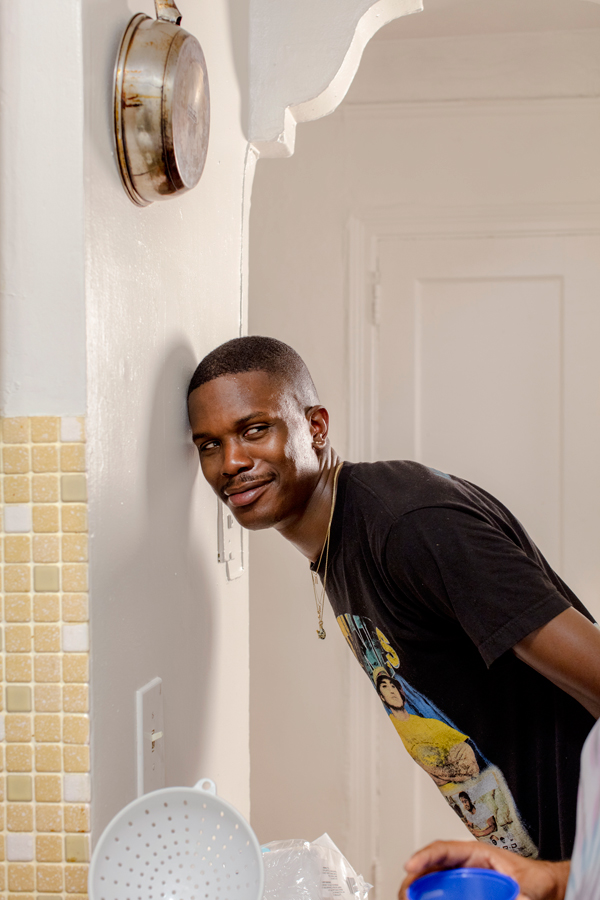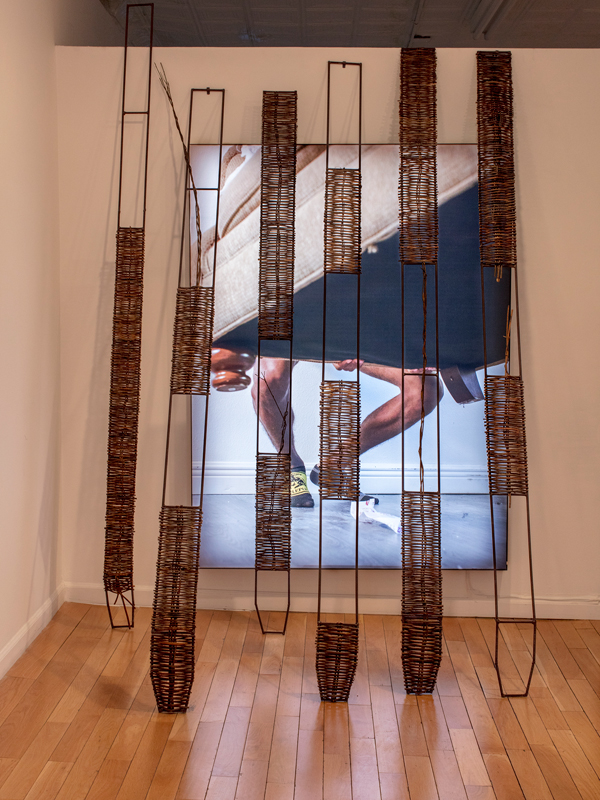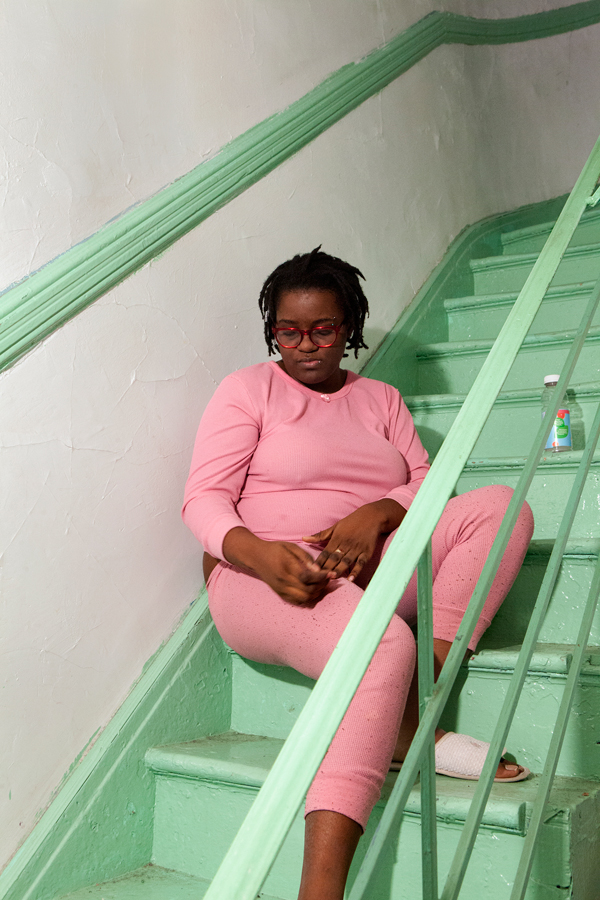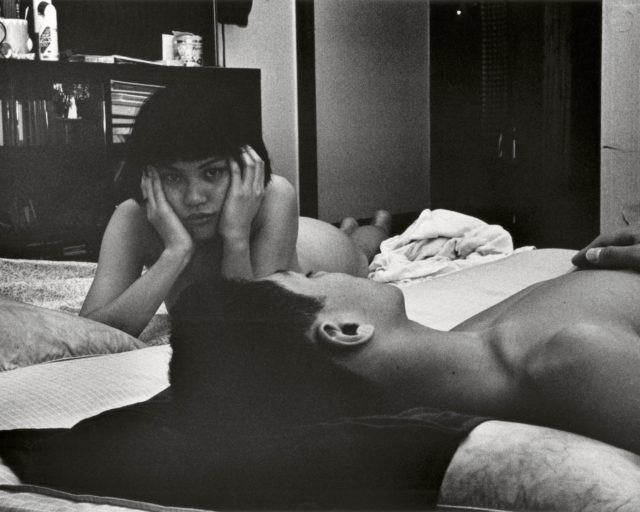For This Young Photographer, A "Simple Song" of Images

Courtesy the artist
Looking at artist Elliott Jerome Brown Jr.’s photographs over the last few years, I can’t help but feel like I’m missing out on something, like catching the middle of a conversation between friends on public transit, or overhearing one side of a phone call. In the presence of Brown’s photographs, you remain in wonder, speculating within the gaps he leaves for us onlookers. Instead of giving in to photography’s susceptibility to spectacularize or idealize, Brown opts for the uneventful, seemingly inconsequential bits and pieces laden with history and elliptical meaning.
It’s no surprise that Brown’s recent solo show at the Baxter Street Camera Club was titled a simple song—a reference to a Billy Preston track, initially created as a hushed intimate recording, that later became propped up by label heads for commercial success. When I spoke with Brown recently, he described that act of communicating something private in public as being core to his overall practice. “I’m inherently dealing with visibility but privileging the interiority of the individuals and spaces I have access to,” he explained.
Throughout the works in a simple song, Brown manages to be plainspoken, but only enough to keep you at a distance. Every decision, from the images themselves to their idiosyncratic titles and their physical displays, feels highly deliberate and considered. There’s no identifiable beginning or end the viewer might try to piece together into a neat narrative. Over our conversation, we got further into the ways he continues to complicate his photographic practice through sculpture, and what it means to reach beyond the mere flatness of a photograph.

Courtesy the artist
Luther Konadu: You briefly mentioned before we started talking that you might be working on a public installation. Have you ever done anything like that before?
Elliott Jerome Brown Jr.: No, I never have but always wanted to. Most everything that we interact with can be repurposed to structure a photograph. Everything is made out of a rectangle. Everything has a square in it. Everything that is a shape, a photograph can somehow occupy. I would like the opportunity to do something public and that can breathe in a different way in terms of who would interact with it and what the work is. A lot of the time, working with photographs, you end up working with them as these precious objects, and I’d like the opportunity to make something physical that can take some use or be impacted by the environment somehow.

Courtesy the artist
Konadu: Do you see that as something that is coming out of your recent work, in terms of incorporating relief elements into the photograph, which is otherwise flat on the wall?
Brown: That is an aspect of the recent work. The largest structure in my show at Baxter Street was a piece inspired by an awning, but didn’t end up referencing an awning. It’s made of willow so there’s a natural element involved in its actual structure. It was an object that no matter how I handled it, I could make missteps or not be as gracious with it. I appreciated that one wrong move would not render this piece unseeable; it could still be shown in public space. Similarly, in another piece constructed after a traditional photo panel, a lot of the damages were a result of working through how to make this thing. The wire was coming out of the groove and breaking as I worked with it. I decided to intentionally wound some areas of the work so that it made sense. I think ultimately, because of the reference for that structure and thinking about how that structure may have lived in someone’s house, or may have received some kind of wear over time, it works. The damages don’t stop it from being displayed.
That process reminded me of my mother’s collection of Lenox Angels. Lenox is a brand that makes plates and other dining ware, but they also make angels. They were specifically making these African-inspired angels where each of the angels was given a significant name. One of them represented music, another strength, and agility, et cetera. My mom has collected over fifteen angels and, over time, a lot of them have been broken. In the various houses—three or four homes—my mother has lived in since my parents divorced, those angels have always had a place to be seen in the house regardless of their damage. Sure, these items were intended to be protected, but the sentiment and the act of cherishing them are consistent; therefore, they’ll continue to be displayed. I like objects from that perspective. They don’t have to be perfect. They can exist publicly even as they’ve been transformed by time.

Courtesy the artist
Konadu: The lightbox in the show feeds into this outdoor way of viewing images as it relates to advertising billboards. The scale of it is also something we haven’t seen from you before. It sounds like you are very much in that place of physicality: thinking about how objects in space enact with our bodies, trying to make a linkage between the two-dimensional way of working—collapsing our three-dimensional space into these flat surfaces—now that you are going back into a very physical mode of working. Was it inevitable that you’d take this new turn?
Brown: The very first piece I ever exhibited was in my junior year of college in 2015. And I was thinking about how I wanted to frame it, but something about the work didn’t make sense in a traditional frame. I had this idea to instead frame it in ribbed undershirts that were stained and bloodied by a costume designer. The work was about internal dialogue and conflict, so I wanted to communicate a sense of abuse that was tangible. I knotted and stapled them around the piece and that was the frame. That was my first gesture as an exhibiting artist but also an artist that cared about each element involved in showing my work to people. And so, these dimensional qualities have always existed when I’m making a photograph. The flatness of the picture is something that I love but it’s also a limitation. I love objects and the things they possess; how they can communicate various experiences and time. The objects in my images are oftentimes equally as important as the individuals in them. When I’m making a picture, I’m already thinking about how I can incorporate the space that the photograph is made into the image and beyond the image. The camera limits the frame to a certain view, so how can I embellish what is not pictured here?
Konadu: That’s something I’m always thinking through with my own work. I’m always trying to figure out how I can continue a single image or multiply it in a way that the reference points to different directions. I think a great example of this in your work is a piece you have in the show right now: He gave and he gave … (2018). That piece is almost disorienting. I have to slow down and look at it several times. I like what you are doing there. You are not making it easy for the viewer to passively consume the image. I think that ties into what you were saying about the frame and the image coexisting together.
Brown: I’m invested in how people live with photographs in public and private spaces. When I’m in public, I’m constantly observing spaces where images can or do inhabit and how I can use that in my own work. The same thing happens when I’m in an interior and thinking about how images inhabit people’s private spaces. That piece was inspired by the way my grandmother collects photographs and the frames she uses to organize them. But more specifically, I had already been thinking about family photo panels and how I can use the frame to cause a tension with the photograph. I wanted to use my own photographs that would work in this fractured, compartmentalized, disjointed way, kind of against how the family photo panel was designed to function.
Family photo panels are traditionally used to organize photographic experiences that are somewhat scripted celebratory moments, experiences of accomplishment such as graduations or awards. Experiences are organized very neatly in these frames and I wanted to reference how sometimes experiences in my life are not neat. Things are haphazard. When you recall some of these experiences as a memory, there are certain memories that are pronounced that you are hyperaware of. There are other memories that are lost and not visible in the photograph that your memory creates. That drove the way that I obscured and made visible the images in that piece. The title also helped reveal my inclination behind putting those two images together.

Courtesy the artist
Konadu: I like how you play with a discontinuity in your work. Photography can easily fall into a narrative driven space, but you seem to jump in and out in the way you image the spaces, objects, and figures in your work. It sometimes seems like you are showing us something specific, but that leads us nowhere in particular. I’m wondering if you can speak about the usefulness in engaging with discontinuity in terms of how the individuals in your images are read.
Brown: The recent Soul of a Nation exhibition at the Brooklyn Museum was talking about the history of photography as it pertains to black people’s usage of it. It talked about the Kamoinge collective headed by Roy DeCarava, and the ways in which that collective practiced photography rooted in reality to prove their thesis. So, they go out and make photos of people on the street and of events and these photographs serve a particular purpose in terms of how you position them through history. But then it started talking about how the next movement of photography by black photographers was led by people like Carrie Mae Weems and Lorna Simpson, who began to consolidate experience into these re-fabricated non-specific moments. So, when you think about Carrie Mae Weems’s Kitchen Table series, it’s a completely fabricated moment where she’s thinking about a lot of different things and symbolizing them, as opposed to documenting how these things show up in reality. These are photographers who are conjuring an image within an environment that looks familiar. And so, it teeters on the line of a document versus a studio fabrication. And I think it is within that tradition that I work. I work in ambiguity in the way that someone like Lynette Yiadom-Boakye creates these characters that exist within an environment that can be either real or imagined or someplace in between.
These moments of happenstance where people are at leisure or in dialogue—that’s something I’m interested in when framing my work. I don’t work in series and so working within these structures allows me to imbue these singular images with a relationship to one another, but also with a multiplicity where their biographical context—presenting it on its own—might not allow. I’m making photographs that move around, challenge other images, offset them, complement and broaden the span of the moment and what they can be of service to.
I think that my practice is maybe more akin to how I see painters work with perspective and how you can be placed in multiple places at once. When I first saw Jonathan Lyndon Chase’s paintings, it really shot my mind. The way he depicts the figure is exactly what I want to communicate in my work. He’s able to make the bodies and the space transcend their natural limits and speak to this collective way we experience and recall things. I think other mediums are often more successful in doing that than photography.

Courtesy the artist
Konadu: Some of your images carefully consider color, texture, and composition the way a painter would—I’m taken by those elements. Examples of this are in works like 96 degrees in the shade (2017) or Kearra, over it (2016) or Mommy, Jayden and I at Christmas (2016). It comes to be a deflection of direct observation of sorts from the viewer—we are not seeing a person but instead a picture of them. If I describe this as formalism, it is not simplifying the image but rather form acting almost like a blockade.
Brown: The form is definitely integral to how you navigate the work in terms of defining the viewer’s distance to the piece. There are some photographic works by other artists that are confrontational. They position the gaze in the way that while you are looking at this work, this person who made the work and the people in them are looking at you. Notions of agency and power dynamics are integrated into such works. There are photographs that work to fold you into the experience of that space or event. In my work there are a lot of things that are peppered through the space. There are a lot of points that allow you to imagine further about this work because all of the work is about intimacy, maintaining a certain privacy, and discretion; naturally the viewer is not allowed mentally and physically to have a certain proximity to the work.
I think the form helps guide that. I think that process of your body relating to these works is a part of the work itself. When you think about the large awning structure I was talking about earlier, it dictates the distance you have to stand. I’m still working on the language around this but the structure dictates that there’s a certain way that you should behave when guiding these works. I don’t think of that behavioral requirement as abusive or repressive but educational. Here is a way to relate to someone’s life that does not require me to own or know everything, but requires me first and foremost to be respectful. When I’m making these works, I’m thinking about how I interact with others. It foregrounds behaviors within my own life.

Courtesy the artist
Konadu: You talk about intimacy and private encounters as being central to your work. How is that sustained as you continue to move outward and become more extroverted with the scale of the work, the sculptural components, and potentially future public works?
Brown: It’s amplified. Sometimes, when I think about these dimensional elements, it comes out of feeling like the photo is not enough to communicate what’s on my mind. But the structures are often like periods or exclamation marks at the end of a sentence that would’ve already exclaimed or ended without those markers. The markers are helpful in contextualizing the work further. The intimacy is still there. Those are the moments I want to photograph. I’m really interested in the parts of ourselves that cannot be articulated or can’t be made available to other people.


























